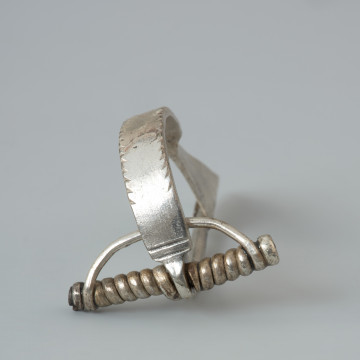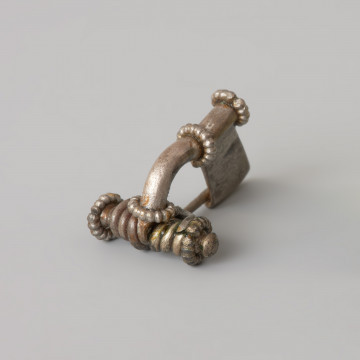
Tortoiseshell buckle
201 — 299
National Museum in Szczecin
Part of the collection: Antiquity
The bronze fibula was a part of a richly furnished urned cremation discovered accidentally in 1971, in the vicinity of the railway station in Łobza. Other elements, like vessels, dress accessories, and two other findings unique to the Pomerania region - a wooden casket and a key - were found in the so-called grave assemblage. The grave ought to be associated with the Wielbark culture and dated to the 2nd – 3rd century. The Wielbark culture’s population was characterized by a great diversity, which is evident, for example, in their burial customs. Intriguingly, the distance was not always the determining factor, as there are known sites of neighbouring cemeteries that differ in burying customs, while some necropolises located at a distance from each other share many common features. Cemeteries generally covered extensive areas, on which both cremation (in flat graves and burrows) and inhumation (in coffins made from hollowed-out tree trunks) burials were discovered. Different types of gravestones were used, such as stone circles, pavements and grave steles. Graves without human remains, so-called symbolic graves (as those found in Kowaleko, Greater Poland), or burials in dugout boats, so-called ship burials (as those found in Weklice, Elbląg Upland) were relatively uncommon.
Monika Witek
Author / creator
Dimensions
cały obiekt: width: 2.8 cm
Object type
pin (fastener)
Technique
casting
Material
bronze
Creation / finding place
Owner
Muzeum Narodowe w Szczecinie
Identification number
Location / status

201 — 299
National Museum in Szczecin

National Museum in Szczecin

National Museum in Szczecin
DISCOVER this TOPIC
Museum of King Jan III's Palace at Wilanów
DISCOVER this PATH
Educational path